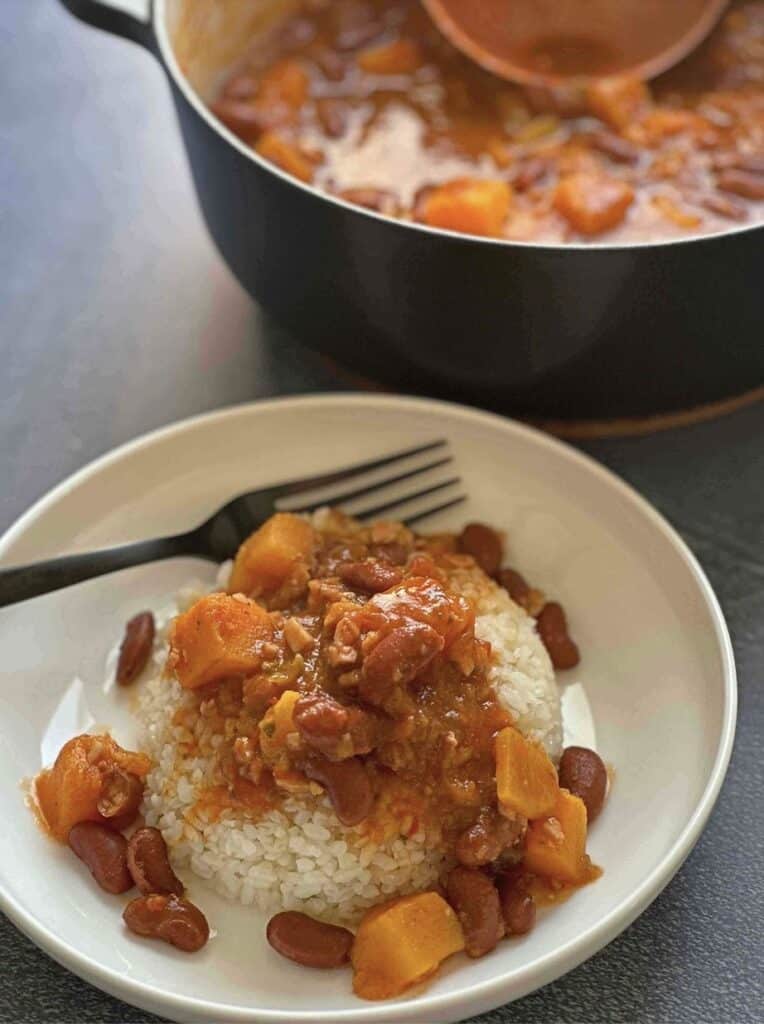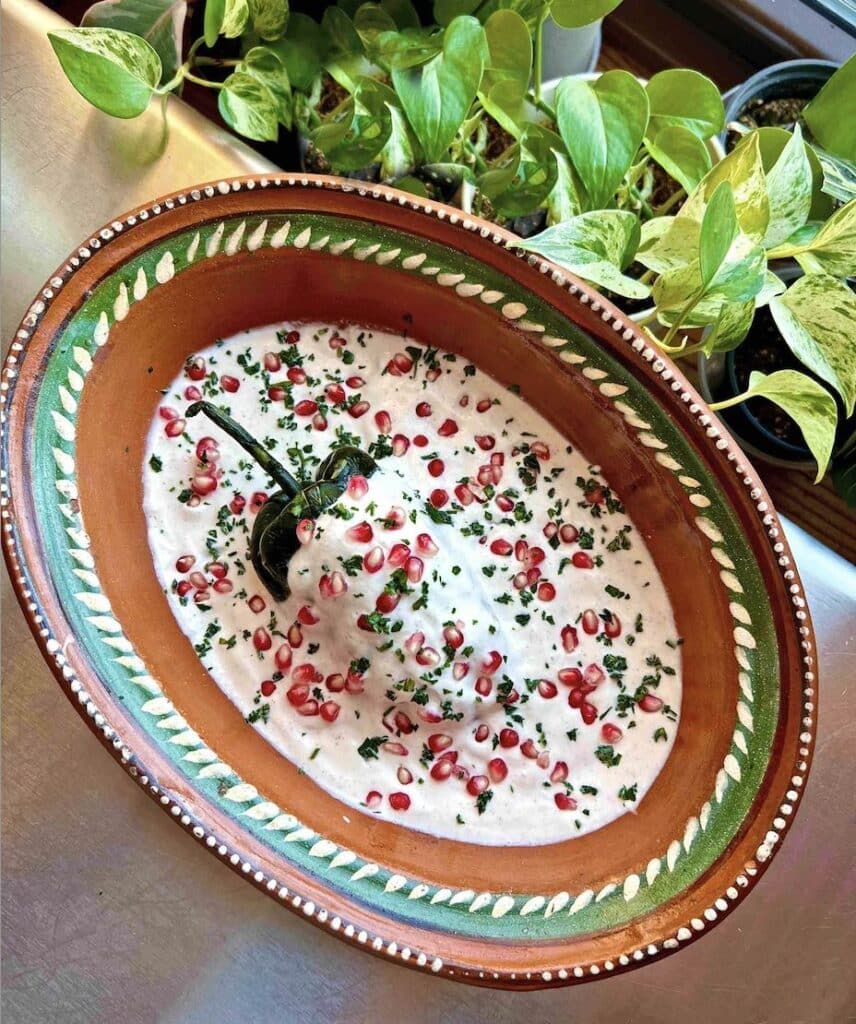Arroz con Habichuelas, Puerto Rican Rice and Beans
- September 2024
- By Michelle Ezratty Murphy
- Recipe from Puerto Rico

“Arroz con habichuelas, claro, nena.” That was Mom’s usual response to what we were having with dinner when my sister and I were growing up in San Juan, Puerto Rico. (It remained her answer once we moved to the States after middle school). Because no matter the main meal, rice and beans made it better: Any kind of chicken and arroz con habichuelas. Black bean soup and arroz con habichuelas. Pork chops or chuletas (one of my favorite words, by the way, ever) and arroz con habichuelas.
Rice and beans is pretty much the perfect side: Comforting, savory, and predictably delicioso in a basic kind of way. It was what my mom Marisa grew up eating, too. That same mound of white rice topped with kidney beans cooked in sofrito and stewed calabaza (squash) was also on her dinner plate almost every night of her childhood.
Dinner just wasn’t dinner if it didn’t include rice and beans, Mom always said. It’s the Puerto Rican way.
The Origin of Rice and Beans in Puerto Rico
Rice and beans have been served on Boricua tables since the 16th century. The dish represents the history of island’s cultures in one plate: Taino, Spanish, African. That what food historian Cruz Miguel Ortíz Cuadra told writer Kathleen Squires when she interviewed him for Familia Kitchen about the history of Puerto Rican food. “Beans were a pre-Hispanic crop that [the indigenous people] the Taíno planted systematically.” The rice was brought in by the Spanish colonizers. And the way rice is cooked “upwards in a pot” as opposed to horizontally (like paella) shows the dish’s “defining African influence,” Ortiz Cuadra explained. Arroz con habichuelas truly is home cooking at its most Boricua.
My Friend Michelle’s Arroz con Habichuela Recipe
You can find my grandmother’s family rice and beans recipe here, and I love it deeply. But I got curious. How different is from others’ versions? I emailed one of my favorite Puerto Rican-food cooks and childhood friend Michelle Ezratty Murphy. How did she make her arroz con habichuelas? Michelle sent me hers that very day. It’s pretty similar to my mine, but there are notable departures. (My abuela’s recipe calls for adding green pepper, onion, tomato, potato and a little sugar. Michelle’s uses cooked ham and chicken broth instead of water. One day I’ll make them side by side and report back.) — Kim Caviness

Q: Michelle, you and your husband grew up in Puerto Rico. How often do you make arroz con habichuelas now that you both live in Arizona?
Michelle: ”Rice and beans are still a a staple in our household. While white rice is always on our stove top, rice and beans are usually prepared at least two times a week and eaten as leftovers all week long.“
Q: What do you think is the secret to making truly great rice and beans?
Michelle: “This recipe is really all about the sofrito. There are no other spices in the beans, except for a pinch of salt to help bring out the flavor. My sofrito is made with onions, garlic, aji dulce (or another pepper like Cubanelle if you don’t have access to aji dulce). And of course, cilantro.”
“Sofrito gives it a flavor like no other, and when mixed in with the tomato sauce and ham, it’s pure Puerto Rican food that can be eaten just with rice, or as a side with any Puerto Rican favorite dish. We like eating rice and beans with a side of maduros or tostones for a lighter dinner.”
Q: And then there’s Puerto Rico’s use of calabaza, which makes our arroz con habichuelas unique. How does your recipe use this ingredient to maximum effect?
Michelle: “My husband remembers his aunt struggling with the calabaza, then cubing it and cooking it on the stove with the beans. In today’s world, squash is easily accessible. I usually buy it at the grocery store, already cubed, either frozen or fresh. I then roast the prepared squash in the oven with olive oil and salt, and sometimes with a little rosemary or garlic.”
“I like to roast the squash al dente. A fork should be able to go into the squash to test for doneness, but needs help to be pulled out. Then you know that the squash can stand another 5 minutes of cooking in the beans without getting mushy. That’s the other secret to making great rice and beans, besides using sofrito.”
Ready to Make Michelle’s Puerto Rican Arroz con Habichuelas?
MoreLike This











Got a question or suggestion?
Please rate this recipe and leave any tips, substitutions, or Qs you have!